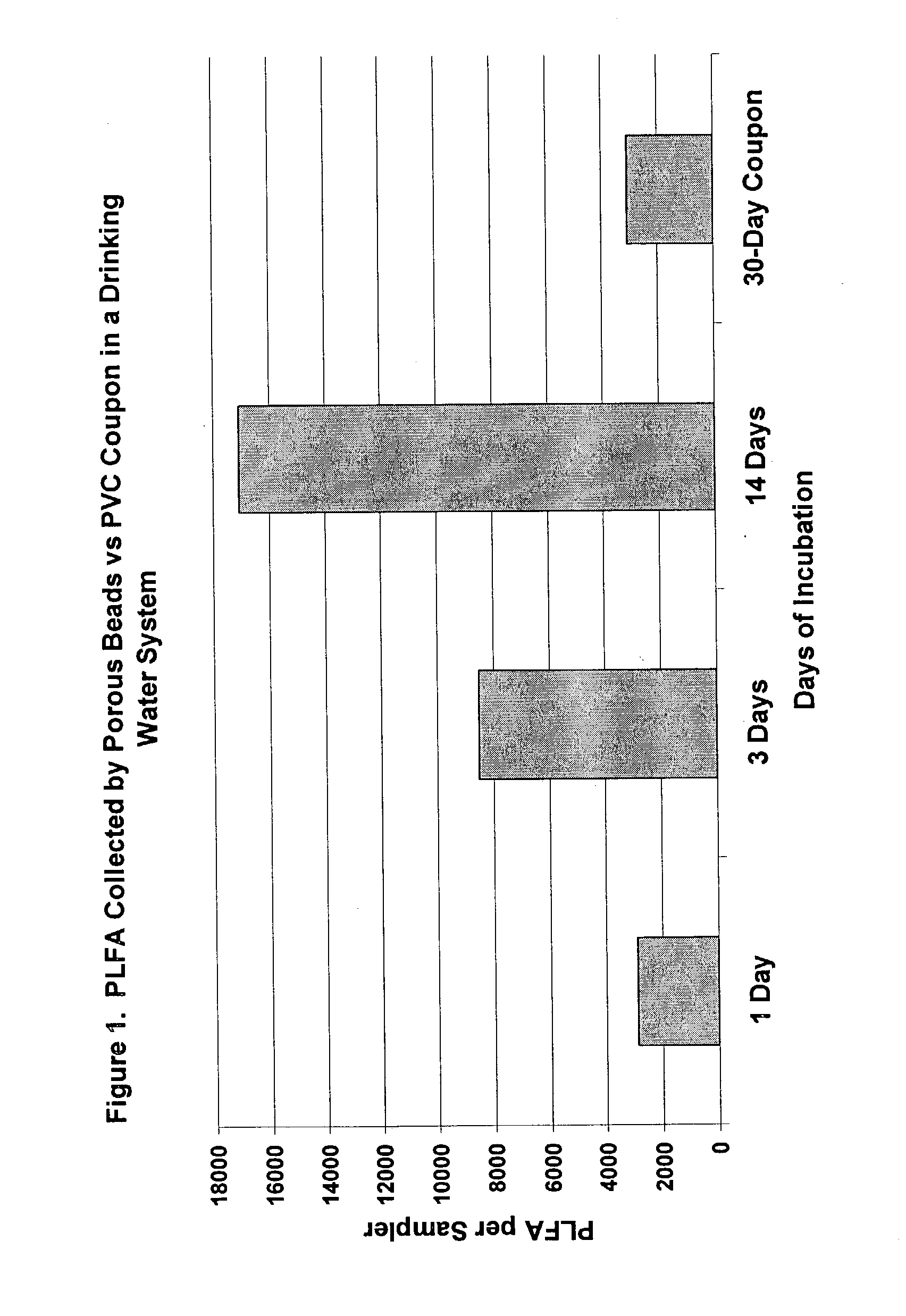Apparatus and methods for forming microcultures within porous media
a technology of porous media and apparatus, applied in the field of apparatus and methods for forming microcultures within porous media, can solve the problems of difficult to acquire a sufficient number of required organisms in order to reliably and accurately perform a detection, characterization or identification assay, and the substrate of coupons is relatively poor for microorganism attachmen
- Summary
- Abstract
- Description
- Claims
- Application Information
AI Technical Summary
Problems solved by technology
Method used
Image
Examples
Embodiment Construction
[0047] The following is an illustrative example of the preferred embodiment of the present invention in which porous beads have been amended with PAC and a polylactate commercial product known widely as HRC. FIG. 8 provides a SEM of a cross section of the PAC and HRC amended porous beads. These porous beads were used to evaluate the potential of HRC to alter the microbial ecology of an aquifer contaminated with perchloroethylene (PCE) to favor organisms that are capable of reductively dechlorinating PCE and other halogenated hydrocarbons. In this application HRC would act as what is called a remediation amendment. Typically remediation amendments for contaminated groundwater are tested for efficacy by pilot-scale injection of the amendment into the aquifer followed by detailed sampling and analysis of groundwater and soil cores to determine if the desired changes in subsurface microbial ecology have been achieved. The present invention can be used to evaluate these amendments withou...
PUM
 Login to View More
Login to View More Abstract
Description
Claims
Application Information
 Login to View More
Login to View More - R&D
- Intellectual Property
- Life Sciences
- Materials
- Tech Scout
- Unparalleled Data Quality
- Higher Quality Content
- 60% Fewer Hallucinations
Browse by: Latest US Patents, China's latest patents, Technical Efficacy Thesaurus, Application Domain, Technology Topic, Popular Technical Reports.
© 2025 PatSnap. All rights reserved.Legal|Privacy policy|Modern Slavery Act Transparency Statement|Sitemap|About US| Contact US: help@patsnap.com



